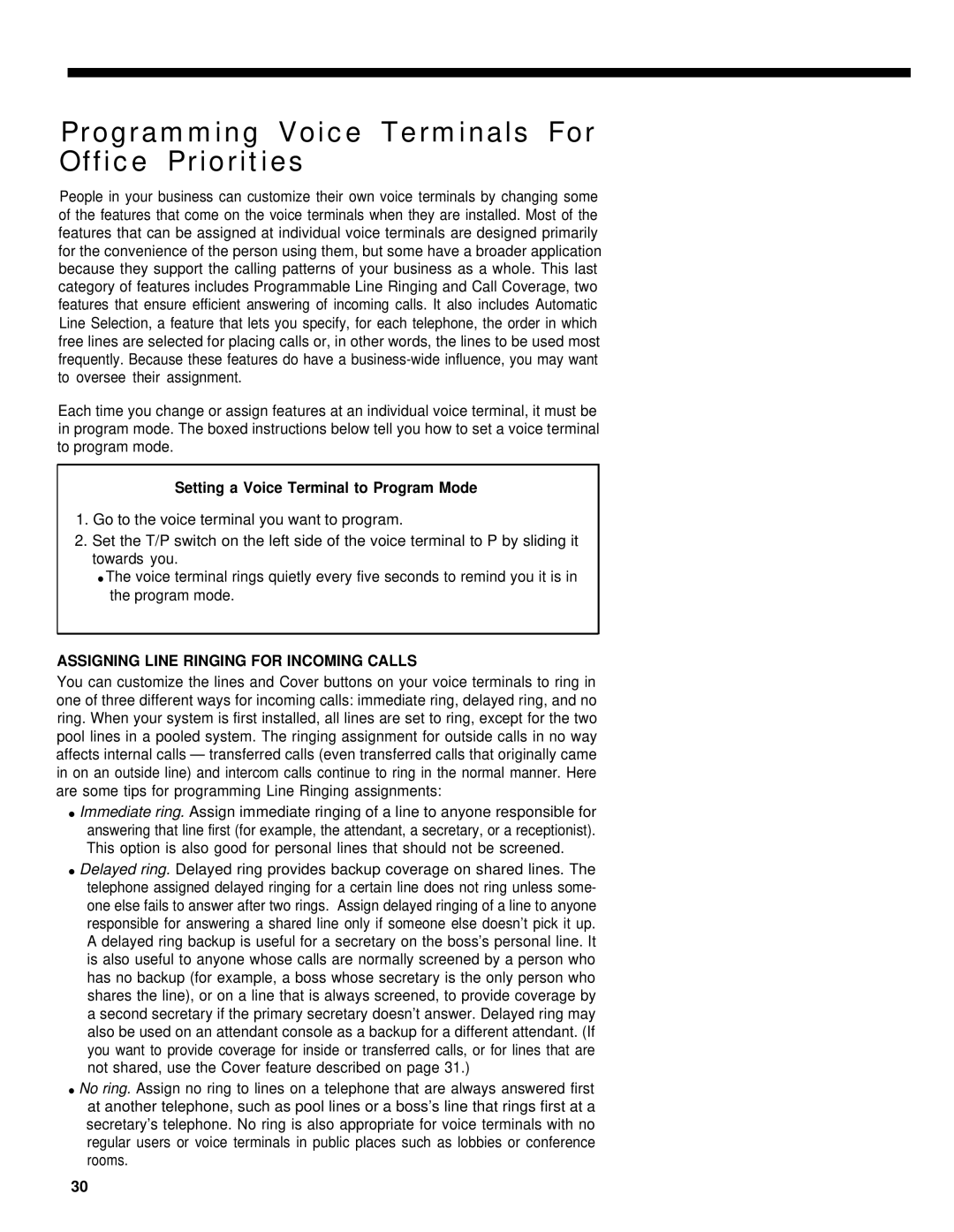
Programming Voice Terminals For
Office Priorities
People in your business can customize their own voice terminals by changing some of the features that come on the voice terminals when they are installed. Most of the features that can be assigned at individual voice terminals are designed primarily for the convenience of the person using them, but some have a broader application because they support the calling patterns of your business as a whole. This last category of features includes Programmable Line Ringing and Call Coverage, two features that ensure efficient answering of incoming calls. It also includes Automatic Line Selection, a feature that lets you specify, for each telephone, the order in which free lines are selected for placing calls or, in other words, the lines to be used most frequently. Because these features do have a
Each time you change or assign features at an individual voice terminal, it must be in program mode. The boxed instructions below tell you how to set a voice terminal to program mode.
Setting a Voice Terminal to Program Mode
1.Go to the voice terminal you want to program.
2.Set the T/P switch on the left side of the voice terminal to P by sliding it towards you.
●The voice terminal rings quietly every five seconds to remind you it is in the program mode.
ASSIGNING LINE RINGING FOR INCOMING CALLS
You can customize the lines and Cover buttons on your voice terminals to ring in one of three different ways for incoming calls: immediate ring, delayed ring, and no ring. When your system is first installed, all lines are set to ring, except for the two pool lines in a pooled system. The ringing assignment for outside calls in no way affects internal calls — transferred calls (even transferred calls that originally came in on an outside line) and intercom calls continue to ring in the normal manner. Here are some tips for programming Line Ringing assignments:
●Immediate ring. Assign immediate ringing of a line to anyone responsible for answering that line first (for example, the attendant, a secretary, or a receptionist). This option is also good for personal lines that should not be screened.
●Delayed ring. Delayed ring provides backup coverage on shared lines. The telephone assigned delayed ringing for a certain line does not ring unless some- one else fails to answer after two rings. Assign delayed ringing of a line to anyone responsible for answering a shared line only if someone else doesn’t pick it up. A delayed ring backup is useful for a secretary on the boss’s personal line. It is also useful to anyone whose calls are normally screened by a person who has no backup (for example, a boss whose secretary is the only person who shares the line), or on a line that is always screened, to provide coverage by a second secretary if the primary secretary doesn’t answer. Delayed ring may also be used on an attendant console as a backup for a different attendant. (If you want to provide coverage for inside or transferred calls, or for lines that are not shared, use the Cover feature described on page 31.)
●No ring. Assign no ring to lines on a telephone that are always answered first at another telephone, such as pool lines or a boss’s line that rings first at a secretary’s telephone. No ring is also appropriate for voice terminals with no regular users or voice terminals in public places such as lobbies or conference rooms.
30
